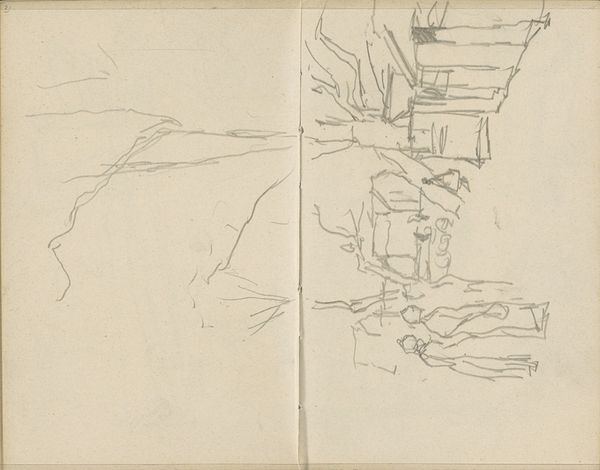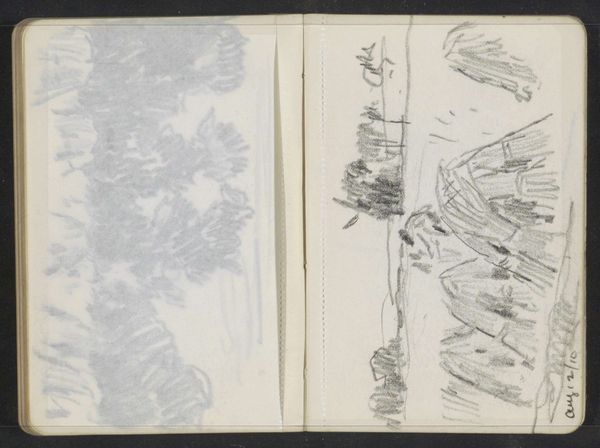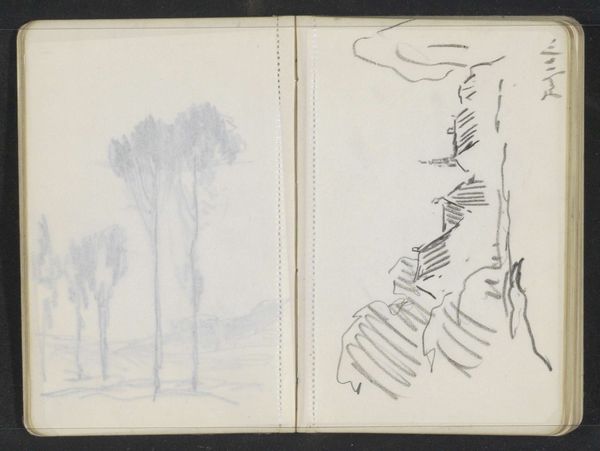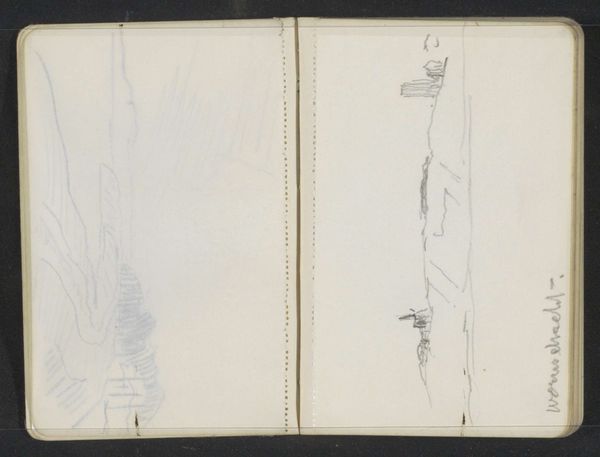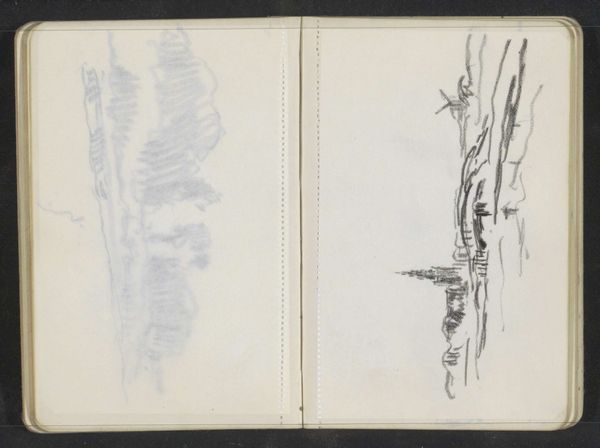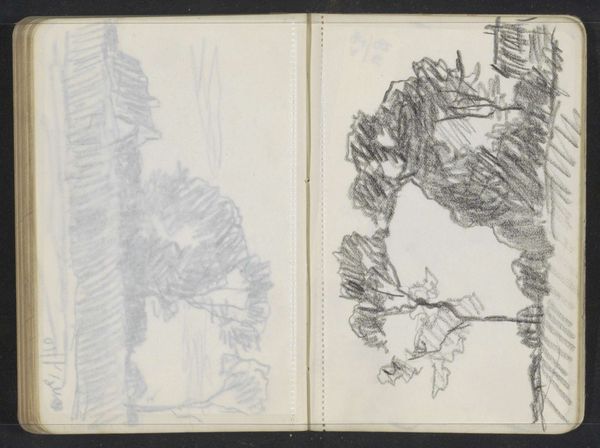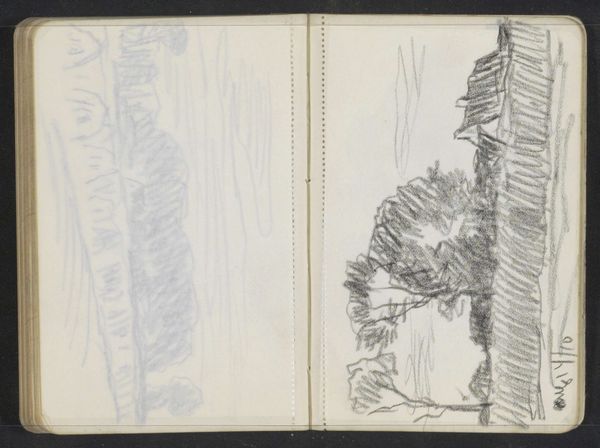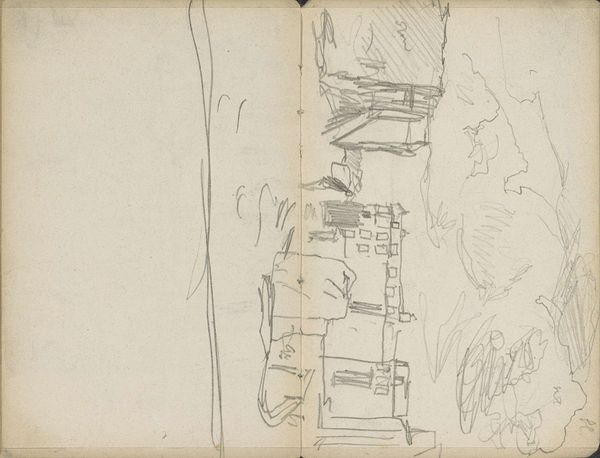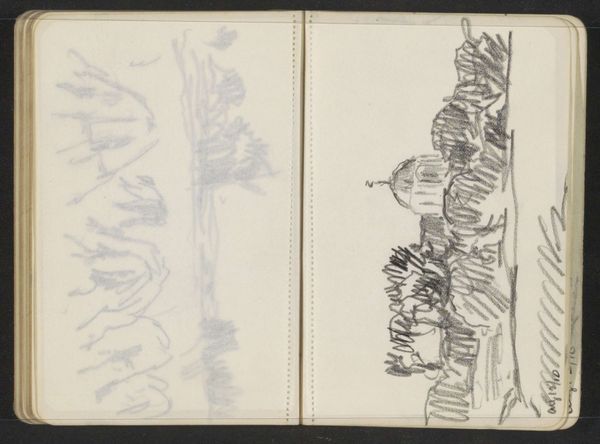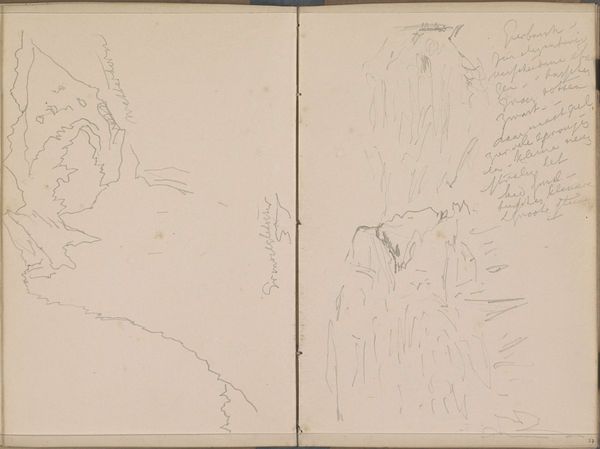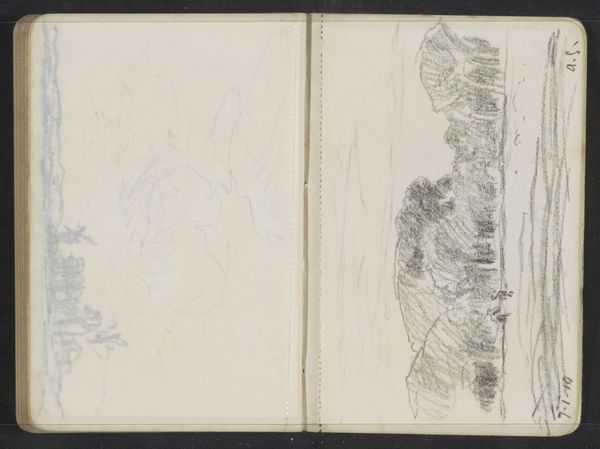
drawing, paper, pencil
#
drawing
#
pen sketch
#
sketch book
#
hand drawn type
#
landscape
#
paper
#
personal sketchbook
#
sketchwork
#
pen-ink sketch
#
pencil
#
pen work
#
sketchbook drawing
#
cityscape
#
storyboard and sketchbook work
#
sketchbook art
Copyright: Rijks Museum: Open Domain
Curator: Welcome. We are looking at "Pad in een landschap", a drawing by Alexander Shilling, from around the 1900s. It's a pencil and pen drawing on paper. What is your first impression? Editor: Well, immediately I am struck by the almost haunting stillness. The sketches, though simple, evoke a sense of isolation. The landscape appears bare and exposed. Curator: The choice of subject speaks to Shilling’s focus on the everyday realities and perhaps, anxieties, of rural life during a time of rapid social and industrial change in Europe. How might this relate to themes of marginalization, and the experiences of ordinary people against a backdrop of dramatic transformation? Editor: I see that too, but I can't help but notice how the composition guides the eye. The contrast between the open, almost blank space and the densely worked lines creating shape. The lines used in each drawing create almost distinct contrasting weights that establish a very interesting compositional relationship between the right page and the elements on the left. Curator: Absolutely. Considering the history of landscape art and its power dynamics, does this particular cityscape challenge or perpetuate existing social hierarchies in representing place? Editor: Maybe, but its simplicity, achieved through line work and tonal balance, underscores a kind of purity. I am fascinated with the lack of detail and the elegance of minimalism on the right side versus the building on the left. It's remarkable how much is suggested with so little. Curator: It speaks, perhaps, to a broader discourse of modernism where representing these simple, ordinary subjects takes a political and social stance. Do you get a feeling that the buildings themselves almost speak about issues of urban development? Editor: Undoubtedly. Looking closely, I am interested in the rhythm and contrast— a conversation unfolds within these rudimentary elements that shape its character and imbue it with depth and tension, despite its minimalistic character. It invites an almost meditative contemplation of the ordinary. Curator: It’s a compelling idea to situate the artist as someone deeply invested in witnessing and registering the nuances of everyday change in this ordinary subject. It truly gives a glimpse of a pivotal moment in history. Editor: Yes, its artistic value lies not in the grandiose, but in the silent eloquence of observation and subtle technical exploration.
Comments
No comments
Be the first to comment and join the conversation on the ultimate creative platform.
